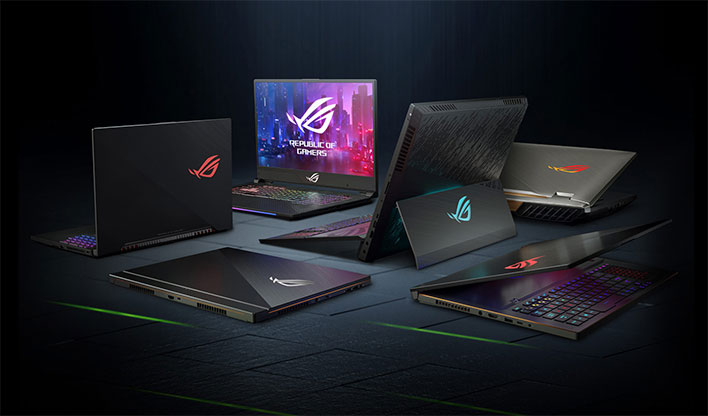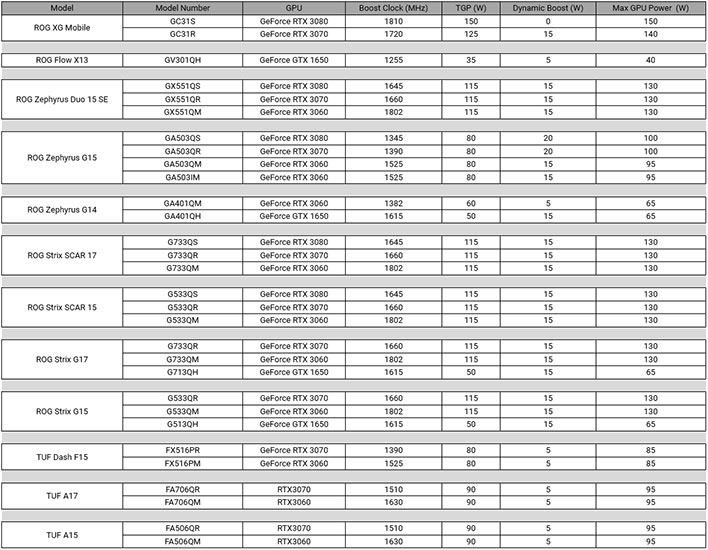NVIDIA's Dizzying Array Of GeForce RTX 30 Mobile GPU Configs Detailed By ASUS

Are you in the market for a gaming laptop? If so, ASUS has just done you and other potential laptop buyers a solid by specifying the parameters of the GeForce RTX 30 series GPUs employed in more than two dozen laptop models. This kind of information is important to have, because NVIDIA's hardware partners have a bit of flexibility in how to configure the various Ampere SKUs at their disposal.
For example, the mobile variant of the GeForce RTX 3080 sports 6,144 CUDA cores, but the power range can be anywhere from 80W to 150W and even beyond. These directly affect the clockspeed. At the lower end of the TGP scale, the GeForce RTX 3080 runs at 1,245MHz, while higher powered configurations run at 1,710MHz. This particular GPU can also come with 8GB or 16GB of GDDR6 memory.
Here's a look at the different config options...
Following reports that the Max-Q branding was going away, NVIDIA told us that was not the case, explaining that it was "initially used in GPU naming since Max Q referred to the GPU TGP only." Now in its third generation, "Max-Q is broader, and is a holistic set of platform technologies and design approach to building powerful and thin laptops," the company added.
"We strongly encourage OEMs to list clocks and other technologies a laptop supports, including Advanced Optimus, Dynamic Boost 2, and more. Ultimately, like all laptop features and specs, it is up to the OEM to market what their particular laptop configuration supports," NVIDIA said.
Therein lies the potential for confusion. There is a dizzying array of GPU configurations available to OEMs, and unless the specifications are clearly outlined for a particular laptop model, it will not be obvious what exactly you are getting. So, kudos to ASUS for making that information available, in an easily digestible format. Here's your cheat sheet...
ASUS also said it intends on updating its product pages with the same information. This is exactly the kind of transparency that is both needed and appreciated, considering there are at least 28 different possible combinations of the three current mobile GeForce RTX 30 series GPUs available to OEMs. The GeForce RTX 3080 in any given laptop, for example, can be one of of at least 11 different variations.
This is in part due to Dynamic Boost 2.0, an optional feature OEMs can employ for additional power, to facilitate faster clocks.
To give a real world example of all this, last week we wrote about an ASUS ROG Zephyrus laptop being available to preorder at Best Buy, with a Ryzen 9 5900HS processor and a GeForce RTX 3070 mobile GPU. Looking at the model number (GA503QR-211.ZG15), we can cross reference it with the above cheat sheet to figure out the GPU is configured at 80W with a 1,390MHz boost clock. The above chart also reveals that it supports Dynamic Boost 2.0, information which is not outlined in the listing.
It's important that manufacturers make this information clearly available, and hopefully other laptop makers will follow ASUS's lead on this one.



